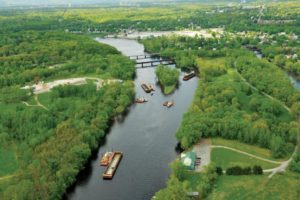Sediment Remediation

In order to reduce potential risks to human health and the environment dredging or excavation remedies for contaminated sediment are the primary means of remediation. Removal of contaminated sediment is generally effective for source control but can be less effective for overall risk reduction if not done properly because of the potential for re-suspension of the contamination during sediment removal and residual contamination that may be left behind when dredging is completed.
Many aspects of the remediation process are more complex at sediment sites versus sites with just soil or ground water contamination. Sediment sites are more complicated because they can have many more sources of the contaminants which may still be on-going, they are dynamic, have complex engineering considerations and migration of contamination can occur over vast distances impacting many communities.
Remedial approaches to cleanup of contaminated sediment sites generally include no action, monitored natural attenuation, capping, in-situ treatment and removal. Sediment removal includes sediment dredging, turbidity control, sediment dewatering, water treatment, and disposal.
The remedy selection framework includes 6 steps:
- Review the site characteristics.
- Identify and map contaminated areas.
- Screen remedial technologies.
- Evaluate remedial technologies.
- Develop remedial action alternatives.
- Evaluate remedial action alternatives.
Step 1 consists of a preliminary review of site characteristics relevant to the evaluation of remedial technologies. These site characteristics have been grouped into four categories: physical, chemical, sediment, and land and waterway use. In Step 2, one or more contaminated areas are established for a site. Step 3 consists of preliminary screening to identify the most favorable technologies based on site-specific data. In Step 4, site-specific characteristics are used to further evaluate the remaining remedial technologies following the screening process. In Step 5, technologies that are determined to be most favorable, based on this multiple lines-of evidence approach, are used to develop remedial action alternatives. A remedial action alternative may include single or multiple combinations of remedial technologies to achieve remedial action objectives. In the final step, Step 6, remedial action alternatives are evaluated for the site.
Source: ITRC
Coordinator: EnvGuide Team






